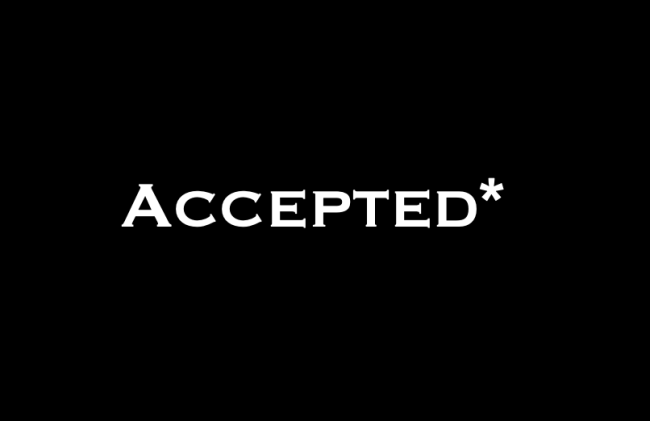You have /5 articles left.
Sign up for a free account or log in.

Inside Higher Ed
As a young student affairs professional in my master’s in higher education program, I found that we never discussed people with fat bodies as an oppressed group, even in my higher education administration diversity course. But after I attended the American College Personnel Association conference workshop titled “Into the Thick of It: Creating Inclusive Fat Spaces” with Atiya McGhee, a doctoral student at Syracuse University, and Janae Due, assistant director of the Anderson Freeman Resource Center at Middlebury College, I felt guilty about my negligence, yet determined to spread the word. So if you are a student affairs professional—or any other college administrator or a faculty member, for that matter—who benefits from straight-size privilege and are not in the loop about fat discrimination, this article is for you.
I’d like to start with the fact that fatness wasn’t always culturally undesirable in the Western world. For centuries, being relatively heavy was considered an attractive characteristic. Artists in the 1600s, for instance, famously portrayed heavier female bodies as the pinnacle of beauty in their works, and the Renaissance era glorified plump white goddesses.
According to Sabrina Strings, author of Fearing the Black Body: The Racial Origins of Fat Phobia, fatphobia has many of its roots in the transatlantic slave trade, in which colonists asserted that Black people were prone to gluttony and sexual excess and that their love of food caused them to be fat. European colonists claimed moral superiority, valuing moderation and self-control, which made them thin, and, according to them, “the superior race.” By the early 1800s, fatness was considered a sign of immorality and racial inferiority in the United States.
Eradicating Body Bias
It has been established that researchers, literature and advocates use “fat” as a neutral descriptor for predominantly plus-size people. Yet society in general does not ask what fat people want or what would be most supportive; instead, they act as if they know what is best for them. Most of us would rather ignore the needs of marginalized people than recognize antifat biases. However, we must do better and take the following steps.
Learn. Academic administrators and faculty members need to unlearn and relearn what we’ve initially understood to be the experiences of fat people. Fat people are discriminated against in all aspects of society, and higher education reflects that bias.
For example, fat students are often discriminated against in our recreation and health centers and have a low chance of creating community relationships. Over all, fat students are less likely to earn higher grades and graduate, as stated by Heather Brown, executive director of the Women + Girls Research Alliance at the University of North Carolina at Charlotte. They also have a lower acceptance rate into graduate school because of the fat stigma, according to researchers at Bowling Green State University.
In addition, fat faculty and staff are often discriminated against when it comes to hiring, promotions, tenure and professional credibility. To advocate for people with these bodies, we as straight-size colleagues must investigate, read, research and, most importantly, listen to fat voices.
Make spaces inclusive. To do so for those with fat bodies, specifically in the context of higher education institutions, we must evaluate physical space. We should carefully consider the accessibility of offices, classrooms, meeting rooms and restrooms—indeed, the accessibility of the entire campus. Bobbi Reidinger shares her experience as a fat scholar and a call to action in a previous Inside Higher Ed article: “Fat academics need to be more vocal in calls for increased structural accessibility, such as larger desks or substitutions for tables and chairs, greater ease in access to elevators, and more. Yet in addition to structural changes that campuses could make to help people of size be more comfortable—such as providing larger bathrooms, chairs without arms, and larger auditorium seating—we need to discuss more techniques to combat stigma within classrooms.”
Program intentionally. Administrators and faculty members must evaluate how they develop programs and interact in classes with students to avoid and disrupt antifatness. A few things to consider are professionalism, media, food-centered activities, field trips, travel and clothing sizes. We should:
- Realize that professional dress means different things to people, especially fat people. Fat clothes come with fat prices in limited availability at stores.
- Be aware of the media you are showing in class. American movies and TV shows tend to shame, stigmatize and make fun of fat people.
- Don’t center all your activities around food. Consider options other than requiring people to eat before each other, and if and when you do include food in meetings and other activities, let people choose what they want.
- When traveling with fat students, look into airlines with a customers-of-size policy. Fat students will need seat belt extenders and sometimes two seats, accommodations that the university should recognize and cover financially. Terah J. Steward talks about flying as a fat person in a Diverse Issues of Higher Education article: “To sit with your body compressed and collapsed on itself smashed against a window, thighs pressed tight together, knots in your back and arms locked across your chest … is what some of us experience.” We must recognize these testimonies of pain in order to support our fat students best.
- Examine the availability of sizes when buying shirts. Don’t just include a 3XL but also a 6XL+. If bigger sizes are not available, why are you supporting a business that isn’t size-inclusive?
Carefully consider language. When speaking with students and colleagues, ask yourself how you talk about fatness and how you may perhaps naïvely or unconsciously be supporting fat discrimination. Do you bring up dieting, weight loss and body image? Are you calling attention to someone’s weight loss or weight gain? Consider asking for consent when bringing up these topics and think how it may make the fat people in your life feel.
Even if you are not actively bringing up weight loss conversations, it is your responsibility as an administrator or faculty member to support all body types. “The freshman 15” is a phrase used all too often in higher education, and we should retire it.
Act as a fat liberationist. We must begin by unlearning and re-educating ourselves on negative and harmful biases about fatness. Activists who engage in the “deliberate work of tearing down the systems that have created a world where fat people are denied full participation in society and life” are considered fat liberationists, writes Lindley Ashline, a blogger for the National Association to Advance Fat Acceptance, or NAAFA.
The work of a fat liberationist in higher education includes recognizing the marginalization of fat students that has contributed to their discrimination, advocating against institutional policies and practices that increase such marginalization and discrimination, engaging in continuing education about the issues fat people confront, and beginning conversations with others about topics related to fat liberation. The University of Vermont, for example, has a webpage dedicated to “Body Image and Body Liberation” on its Center for Health and Wellbeing website.
Investigate what your college or university states in its discrimination and harassment policy. More often than not, it will say it is prohibited to discriminate against a person due to their age, color, disability, genetic information, gender identity, national origin, race, religion, sex, sexual orientation or veteran status, but weight will not be listed as a form of discrimination. Fat liberationists must call for conversations with the administration to disrupt traditional practices and policies. It is essential to consult and center the voices of fat humans at the table in these conversations.
The steps I’ve described are just the beginning of what can and should be done to support people with fat bodies at our institutions. People use euphemisms to disguise what they find distasteful, Marilyn Wann writes in her book Fat! So? “but there is nothing wrong with being fat, so there’s nothing wrong with using the word.”
Reminder: I have fat, and you have fat, and we all have fat on our bodies. So let’s talk about it—empathetically and thoughtfully.




